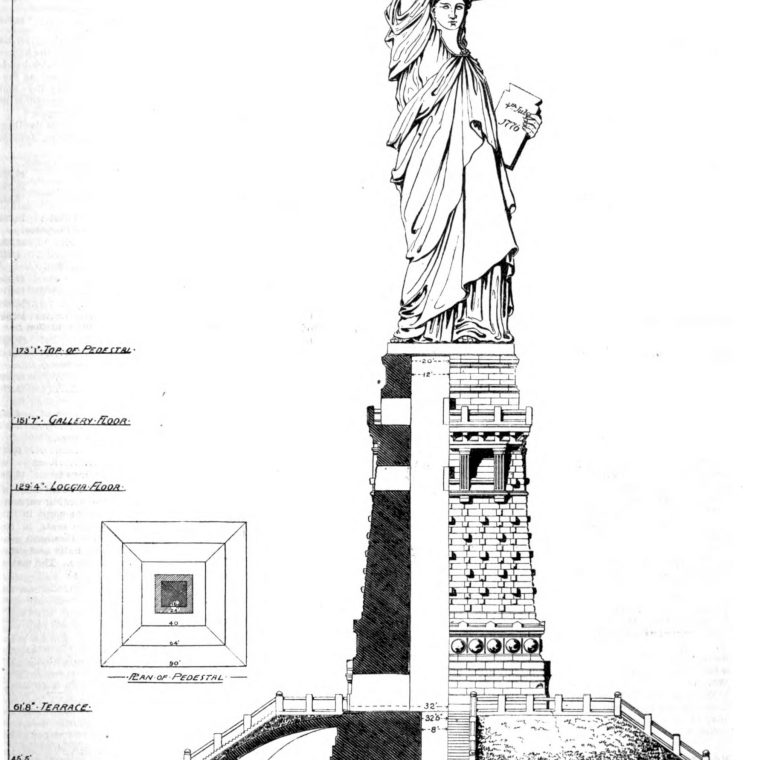The Statue of Liberty contains a wrought-iron frame designed by Gustave Eiffel, one of the finest engineers of the nineteenth century. It sits on…a block. A fancy block, as it turns out, with a fairly complex structural design, and an architectural design by Richard Morris Hunt. But a block. Most people in the US (and quite a few elsewhere) have some kind of mental image of the statue proper, but if you ask them to describe the base, they come up empty. The illustration above, from the January 5, 1884 edition of the Engineering News, is not quite accurate but it gives a sense of the base and statue. It accurately shows the base as a square donut in plan, with the central void used for access to the statue.
The description, written as work was beginning, is also inaccurate. It correctly describes the foundation, up to the terrace level that is the visual bottom of the base, as concrete, but says that the main above-grade portion of the base will be entirely ashlar masonry, while it was actually built as mass concrete with ashlar veneer. The concrete was all unreinforced – this work was taking place some 15 years before the first real reinforced-concrete buildings in the US – and is not normal concrete by our standards. The mixes described in the News are interesting experiments: the below concrete uses natural (Rosendale) cement with a ratio of 2:2:7 and the above-grade concrete uses a mixture of Portland and Rosendale cement and a 2:5:6 ratio. The first is, by our standards, not sandy enough; the second is too sandy.
The article also states, somewhat vaguely, that the legs of the statue’s frame will be connected to tension ties down to the base of the pedestal, but no details are given. To me, it reads like the pedestal’s engineer, Charles Stone, was playing for time with the press while he was still designing. His built solution is both great and unsubtle: there are large built-up girders crossing the central void and embedded in the concrete walls of the base. The tie rods from above pass through the girders and bear upwards on the underside:

The things that look like large bolts are the bottoms of tie-downs, and you can see the lower ends of two eyeball chains above the quadruple girder on the right. You can also see the board marks on the concrete walls from the original formwork. This photo, from the mid-1980s, shows the old steam radiators that were an attempt at regulating the temperature inside the base and statue. The newer system installed after this picture works better.
Like I said, a fancy block.




You must be logged in to post a comment.